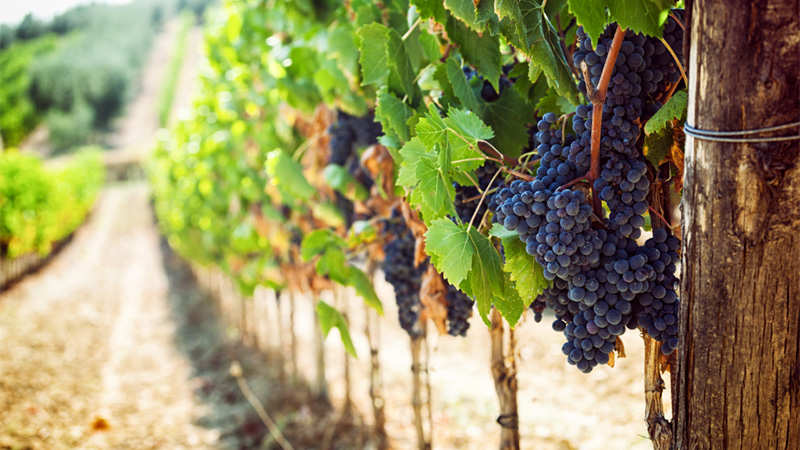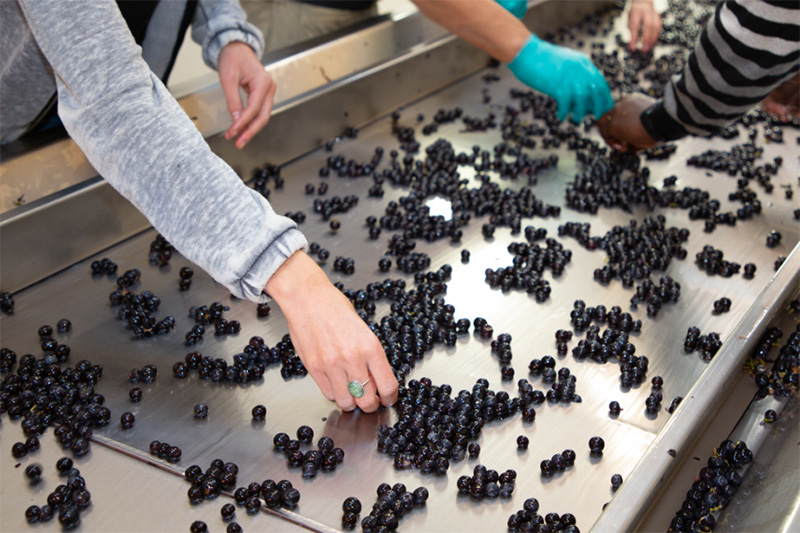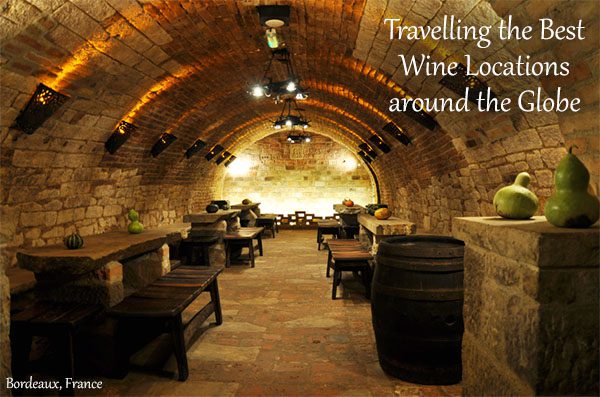Red Wine: How Is It Made?
Red wine is a staple drink in many dining settings. There are varying qualities and types of red wine based on the grapes they’re made from, the type of equipment used in production, and other intricate production details discussed in this article. However, all red wine production follows the same basic process of manufacturing.

Red wine is produced heat-free in a clean environment, making it suitable for immediate consumption right after it has been produced in the winery. They are typically additive-free, except for yeast and sulfur dioxide, which are often used. If you’re wondering how red wine is made, let’s dive in:
Harvesting
Red grapes are harvested when mature. Many parameters are checked before the grapes are harvested. However, the most distinguishable parameter for grape maturity is their vivid color change. Red grapes change from their initial green to a red-purple color.
During the process of maturity, there is a considerable increase in a grape’s sugar level and a decrease in their acidity levels. The harvesting process is quite complex as grapevines go through a series of tests before they can be harvested. High-quality wines are harvested by hand to prevent damaging the grapes.
Stemming And Crushing
Harvested grapes are transported to a de-stemmer to remove the stems from the berries. The mass of de-stemmed grapes is then sorted for any faulty or unripe ones that cut the de-stemmer.
The next stage is crushing. The grapes are lightly crushed to break the skin of the berries slightly. During the crushing process, it is ensured that it is not crudely done to avoid breaking the seeds in the berries. Must, which is the mass of pulp, skin, and seed, is transferred to the fermenting vat, which could be made of wood, steel, or concrete.
In the fermenting vat, some sulfur dioxide is usually added as a preservative. It is used to prevent the oxidation of flavors and the growth of unwanted micro-organisms.

Pre-Fermentation Adjustments
This is the stage where the grape must is further prepared before the full fermentation process begins. As there many types of red wine, the pre-fermentation processes also differ between winemakers. Here are some of the common processes that are carried out at this stage:
- Cold Soak: Otherwise known as cold maceration. It is the phase where the must is cooled using dry ice. It promotes juice and skin contact by slowing the beginning stages of fermentation. This serves the primary purpose of pigment extraction in the absence of alcohol. It is a process that lasts for about two days.
- Must Adjustment: Grapes are expected to contain a sufficient level of sugar during harvest. When the grape must does not meet the sugar requirements at this time, sugar must be added. For the right sugar quantity, grape seeds and skins must be calculated appropriately.
- Acidity Adjustment: Red wines are produced with lower acidity levels compared to white wines. If the grapes’ acidity level is too low, then it has to be elevated by the addition of tartaric acid. In cases of heightened acid levels, the grapes have to be deacidified using biological processes.
Fermentation
Having completed all forms of adjustments to the red grape must, fermentation then needs to commence. It is a rather long and delicate process in producing red wines. Fermentation is expected to be done in ideal environments, especially for temperature control. This is either a one- or two-step phase. The second phase of fermentation is optional but can be used to achieve better wine quality upon completion.
-
The First Fermentation Phase
Some winemakers make use of open containers to facilitate proper must handling and temperature control. Other winemakers use covered fermentation vats to carry out the fermentation while regulating temperature externally.
Yeast is added to the must in the fermentation vat to kickstart the fermentation process. Various strains of yeast can be used in wine fermentation. Alcoholic fermentation begins after a few days of being in the vat. Temperature values can range from 160°C to 300°C, which is why there is sometimes a need to regulate the temperature of the vats.
As the fermentation progresses, the skins and seeds begin to gather at the top of the vat into a mass called cap. Cap-regulation techniques such as pumping-over, delestage, and pigeage are used to further facilitate the juice extraction process by turning the cap back into the juice. This is the first fermentation process, and it takes around 21 days or more to be completed.
-
The Second Fermentation Process
Here, the fermented must is separated from the pomace to be emptied into another vat. The resulting wine is called free-run wine. The left-over pomace can be pressed gently to release the remaining juice depending on the quality of wine desired.
The second stage of wine fermentation is called malolactic fermentation. It serves to ferment unfermented sugars and allow the wine to attain a complete structure. The malolactic fermentation enables malic acid to be transformed into lactic acid, thus releasing carbon dioxide. It is a subtle step for achieving better flavor and reducing the acidity of the wine.
Wine Clarification
The resulting young wine at this stage is of a cloudy suspension. This is due to the presence of suspended materials through the newly derived wine. When wine is stored, these particles begin to settle at the bottom of the vat. The following are processes used to achieve a clearer wine for consumption:
- Racking: At this stage, the wine is separated from dead yeast cells or lees that settle down the barrel’s bottom. Sediments will decrease depending on how much racking is being carried out. As this happens, odors emanating from the additives will be lost gradually. Air exposure must be rightly controlled during the wine transfer to aid the aging process.
- Fining: Fining is used to achieve better clarity and flavor. Other purposes served by fining is to reduce tannin levels and produce a softer wine feel. The agents used in fining can be protein-based ones such as eggs and gelatin powder.
- Filtration: Filtration is optional but can be used to perfect the wine clarification process. It involves the passage of wine through varying filter pore sizes to achieve a clearer liquid.
Aging Or Maturation
This process allows the wine to experience a series of changes in the vats or wooden barrels. The aging period for wines depends on their style. Simple wines are known to take lesser time to attain maturation compared to medium- and full-bodied wines.
Wines experience expansion and condensation inside barrels. This repetitive alternation allows for the loss of wine content. This little space on top of the barrel is enough for air pockets to form, leading to spoilage. Winemakers are expected to top up their barrels often to compensate for this wine loss. This is not the case for steel and glass containers.
Final Thoughts
Red wine is a great drink to have in every season at any place. Its delicate process of preparation takes many months to complete. It involves several stages such as harvesting, stemming and crushing, pre-fermentation adjustments, fermentation, clarification, and maturation. Once it has passed through all these, premium red wine can be enjoyed at its finest.



